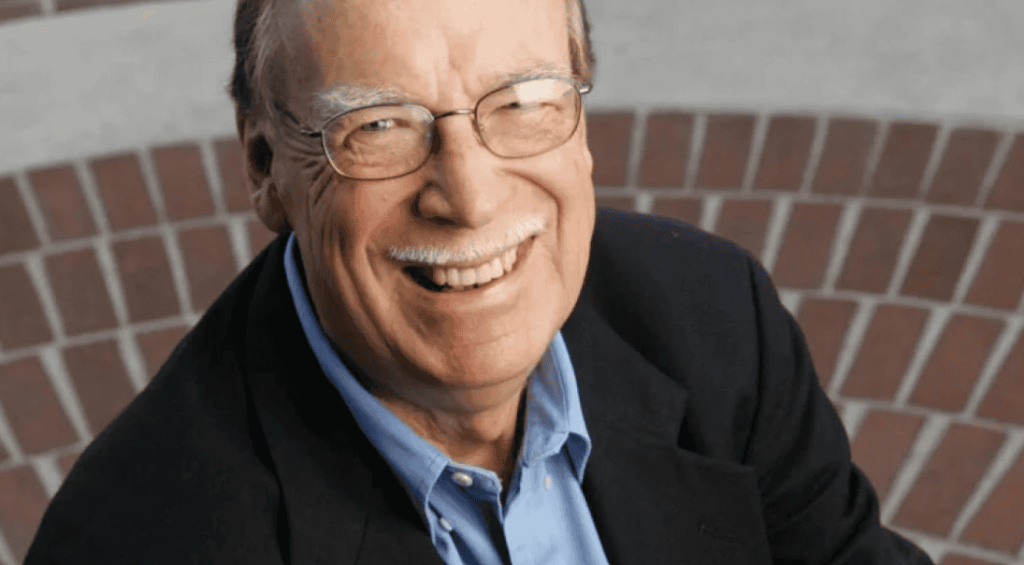Richard Easterlin, who passed away in December 2024, was a visionary economist whose pioneering research transformed how we think about economic growth, happiness and human wellbeing. This column, written by a friend and colleague, outlines some of the key contributions and impact of a long professional life mostly spent examining data on, and discussing the importance of, human feelings. The Easterlin paradox, which demonstrated that rising income does not necessarily lead to increased happiness, challenged traditional economic assumptions and continues to shape global policy debates.Just before Christmas 2024, a colossus died.
Richard (‘Dick’) Easterlin was my friend. I loved him for his warmth, his wisdom, his continuous generosity of spirit, his gentle brilliance and his humanity. I had hoped to be at his 100th birthday party. Many, many of my friends and of Dick’s network of colleagues around the world loved him too. I imagine they will write their own tales of this scholarly giant.
I am aware that intellectual obituaries and memorial articles are not meant to begin this way – by talking about feelings.
But here it seems entirely appropriate: Dick Easterlin spent most of his professional life examining data on, and discussing the importance of, human feelings. Hence I think a tribute to him can and perhaps should begin that way. He would have recognised the importance of feelings among those who remain to write, and to read, memorials.
To understand Professor Easterlin, if you never met him, the central thing to grasp is that he was an intellectual iconoclast. He was even perhaps the iconoclast’s iconoclast, because his ideas were conceptually rebellious within fields of study that in some cases were themselves analytically rebellious. Those fields included the economics of happiness and the statistical study of people’s fertility decisions.
A key purpose of universities is to foster and debate revolutionary ideas. That is why they seek to employ the rare men and women who are extreme iconoclasts.
Richard Easterlin’s most famous idea turns much of standard economics upside down (and remains disputed by large numbers of conventional thinkers). It is the argument – now famously called the Easterlin paradox – that as nations grow richer, they do not grow happier.
This is either wrong or one of the most profound notions ever put forward by a researcher in any field of academia. In either case, that disconcerting proposition and its associated evidence have in principle to be faced by each prime minister, finance minister and president on our planet. My view is that over the next hundred years they eventually will have to, so we will see such a conceptual confrontation. Climate change may hasten the uncomfortable reckoning.
There was nothing deliberately obdurate or wilful about the Easterlinian choice to say things that others had never said. He simply saw the world differently – more shrewdly, more humanly, more humanely. I do not know why he was like this. Perhaps the roots of such things lie in childhood and upbringing; perhaps they are provoked by innate personality. A glance at his CV shows that this precious ability began decades before I first met him, which was at a conference on “Economics and the Pursuit of Happiness” at Nuffield College, Oxford, 11-12 February 2000.
Dick Easterlin went so strongly against the intellectual herd that it required decades for his most fundamental ideas to take hold. The famous 1974 paper, which he told me he found impossible to publish in a regular refereed economics journal, ends with the following sentences: “If the view suggested here has merit, economic growth does not raise a society to some ultimate state of plenty. Rather, the growth process itself engenders ever-growing wants that lead it ever onward.”
In my view, this has the ring of truth. Since those words were written, I think it might be fair to say that such judgements, expressed in a variety of ways and often without formal statistical evidence, have become relatively common.
Since early 1974, material riches have been spread, especially throughout a fortunate elite minority, but also in part across the majority of citizens too, at least within the modern industrialised nations. But do we see rejoicing and widespread contentment in a consistent way? Concerns about mental health and work overload are now everywhere in the media and in informal discussions around dinner tables in prosperous countries. That was not a feature of life in 1974, nor even, I think, in the early 2000s.
Formal studies of mental health scores through time are also not encouraging. Richard Easterlin would say, and I think correctly, that humans find it almost impossible to feel happier as they get richer if they see all those around them becoming richer. Although they do not mean to do it, people are intrinsically relativistic in how they feel and make their social comparisons.
Today – and here regression equations are not needed – we are living in a visible and continuing laboratory experiment. All readers will be familiar with it.
The BMWs get faster, larger (despite shrinking family sizes), more glamorous. Newspapers like the Financial Times and The Economist carry advertising photographs of intricate men’s watches, ones that sell for prices that could buy an apartment in most of the world’s cities, and are purchased by individuals who all carry mobile phones that tell the time anyway. Is the great tide of economic progress in the advantaged nations leading self-evidently to increasingly cheerful, carefree, smiling citizens?
The second main concept for which Dick Easterlin is known is a contribution to demography. It is often called the Easterlin hypothesis or the Easterlin effect. Large cohort size, the argument goes, leads to worse circumstances for the citizens born in those cohorts. Low relative status – in terms of economic prosperity for the individuals, especially when psychologically compared with that of their parents – then alters how those individuals behave. They have fewer babies; they marry later; they display signs of alienation. The ups and downs of birth rates in this way have a foundational role, years later, in how well a society functions.
It is enthralling to read the 1974 paper today. I believe, although cannot be certain, that I first saw it in the late 1970s, while a student, standing in a dimly lit corner of the library that was attached to the Institute of Economics and Statistics on Manor Road in Oxford. At that time, I was thinking about the theory of relative deprivation, and Easterlin’s arguments made sense to me. But I was principally focused on mathematical models, so I am not sure how much I took in. It was another 15 years, working with Andrew Clark and David Blanchflower, before I became interested in formal work on happiness data.
Table 2 of Easterlin (1974), using data from the year 1970 in the US, depicts the now-known strongly positive gradient relationship between the income of a person and the reported happiness of that person. Richer individuals give higher happiness scores. Of the people in the top-income category reported by Easterlin, 56% of them said that they were “very happy”. The table then shows, powerfully, how there is a monotonic decline after that: as the incomes of groups become steadily lower (this is as a cross-section), the percentage of “very happy” citizens drops in turn … eventually to just 29% among low-income men and women.
Although the pattern is not corrected in an econometric sense for any of a large number of potential confounding variables, such as marriage, health, education and age, one might think that economists of every type would be pleased by this monotonic pattern. All first-year undergraduates are taught that a person’s utility level increases with the level of their income.
Surprisingly, the conclusion that Easterlin made famous (his paradox) is only marginally evident in the 1974 article for which he has become appropriately famous. I will not report the whole of the key table, which is Table 8 in Easterlin (1974), but it gives the percentages of the US population who report different levels of happiness.
The data run from 1946 to 1970. In 1946, 39% of Americans declared themselves “very happy”. In 1970, the last year in Easterlin’s sample, 43% of Americans did so. Equivalently, in 1946, 10% of Americans gave the lowest possible answer, that of “not very happy”. By 1970, that unhappy percentage had dropped to 6%.
I am not sure how many scholars today read the famous 1974 article. It is not clear that the Easterlin paradox emerges from the original article in the way that has been presumed.
Nevertheless, modern data have suggested a considerable deal of support for the Easterlin paradox (even though not all researchers agree, and there are certainly swings up and down in the mean level of reported happiness in a nation, particularly in response to movements in the aggregate unemployment rate, so it is necessary to solve out for the underlying trend). An example is the striking case of China through time, which is described in Easterlin et al. (2012). Whether the Easterlin paradox is exactly true, or simply approximately true and thus valuable because of the questioning insights into modern society to which it points, remains debated.
I have come to realise that astounding thinkers often sense the correct conclusions – Easterlin and O’Connor (2022) seems to me another example – early on without having access to unequivocally clear evidence. That is a sign of genius, in the proper sense of the word.
Few of us are able to be many, many decades ahead of our time. Dick Easterlin was. I miss him. We all do.
What a man; what a thinker.
Career notes
Richard Easterlin studied engineering at the Stevens Institute of Technology and went on to obtain a PhD in economics from the University of Pennsylvania in 1953 (where Simon Kuznets was an adviser). He was on the faculty there from that year onwards until 1982. He then moved to the University of Southern California where eventually he became a University Professor.
Easterlin was a Fellow of the American Academy of Arts and Sciences, the National Academy of Sciences and the Econometric Society. He was a Distinguished Fellow of the American Economic Association, won the IZA Prize in Labor Economics from the Institute for the Study of Labor in Bonn in Germany, and many other awards, including recently being made a Clarivate Citations Laureate.
Source : VOXeu



































































